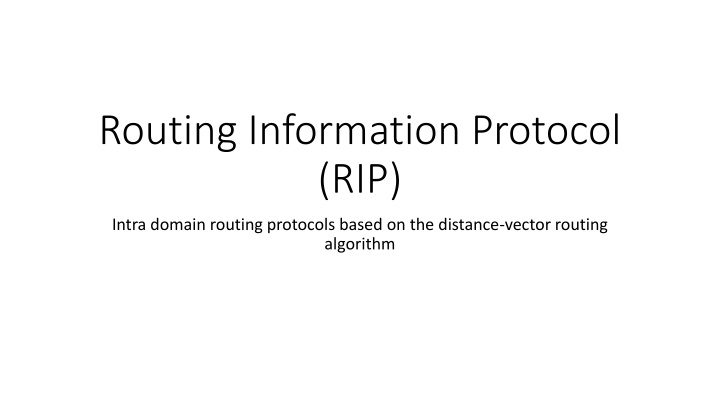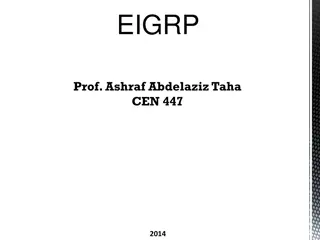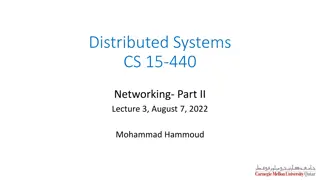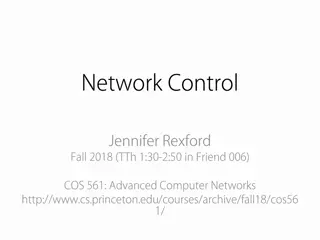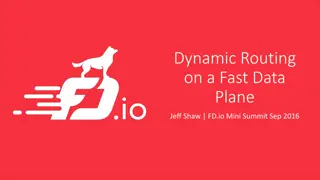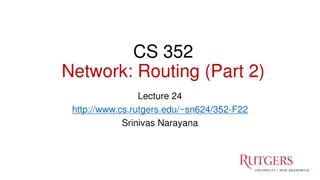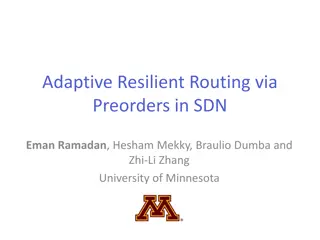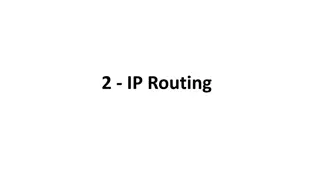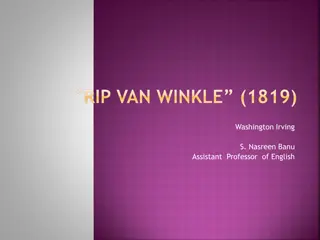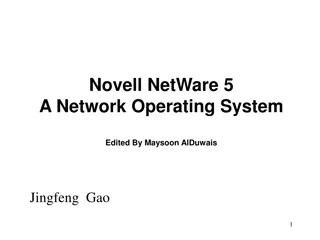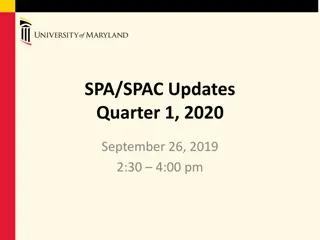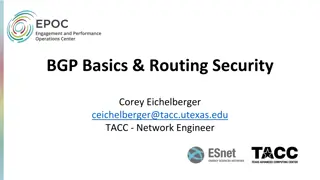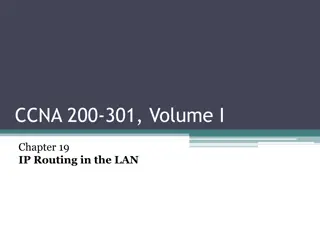RIP Protocol Essentials: Distance-Vector Routing
Discover the fundamentals of RIP, an intra-domain routing protocol utilizing the distance-vector algorithm. Learn about hop count, forwarding tables, implementation details, message types, and the RIP algorithm with examples.
Download Presentation

Please find below an Image/Link to download the presentation.
The content on the website is provided AS IS for your information and personal use only. It may not be sold, licensed, or shared on other websites without obtaining consent from the author.If you encounter any issues during the download, it is possible that the publisher has removed the file from their server.
You are allowed to download the files provided on this website for personal or commercial use, subject to the condition that they are used lawfully. All files are the property of their respective owners.
The content on the website is provided AS IS for your information and personal use only. It may not be sold, licensed, or shared on other websites without obtaining consent from the author.
E N D
Presentation Transcript
Routing Information Protocol (RIP) Intra domain routing protocols based on the distance-vector routing algorithm
Hop Count A router in this protocol basically implements the modified distance- vector routing algorithm to support autonomous system. Modifications: RIP routers advertise the cost of reaching different networks instead of reaching other nodes. In other words, the cost is defined between a router and the network in which the destination host is located. the cost is defined as the number of hops, which means the number of networks (sub-nets) a packet needs to travel through from the source router to the final destination host.[the maximum cost of a path can be 15, which means 16 is considered as infinity]
Forwarding Tables The routers in an autonomous system need to keep forwarding tables to forward packets to their destination networks. Aforwarding table in RIP is a three-column table first column is the address of the destination network second column is the address of the next router to which the packet should be forwarded, third column is the cost(the number of hops) to reach the destination network.
RIP Implementation implemented as a process that uses the service of UDP on the well- known port number 520 IP has gone through two versions: RIP-1 and RIP-2.
RIP 2: RIP Messages Two RIP processes, a client and a server, like any other processes,need to exchange messages. RIP-2 defines the format of the message.
Types of RIP MESSAGES RIP has two types of messages: request and response. A request message is sent by a router that has just come up or by a router that has some time-out entries. A request message can ask about specific entries or all entries. A response (or update)message can be either solicited or unsolicited. A solicited response message is sent only in answer to a request message. It contains information about the destinations pecified in the corresponding request message. An unsolicited response message, on the other hand, is sent periodically, every 30 seconds or when there is a change in the forwarding table
Timers in RIP The periodic timer controls the advertising of regular update messages. Each router has one periodic timer that is randomly set to a number between 25 and 35 seconds (to prevent all routers sending their messages at the same time and creating excess traffic). The timer counts down; when zero is reached, the update message is sent, and the timer is randomly set again The expiration timer governs the validity of a route. When a router receives update information for a route, the expiration timer is set to 180 seconds for that particularroute. Every time a new update for the route is received, the timer is reset. If there is a problem on an internet and no update is received within the allotted 180 seconds the route is considered expired and the hop count of the route is set to 16, which means the destination is unreachable. Every route has its own expiration timer.
The garbage collection timer is used to purge a route from the forwarding table. When the information about a route becomes invalid, the router does not immediately purge that route from its table.
